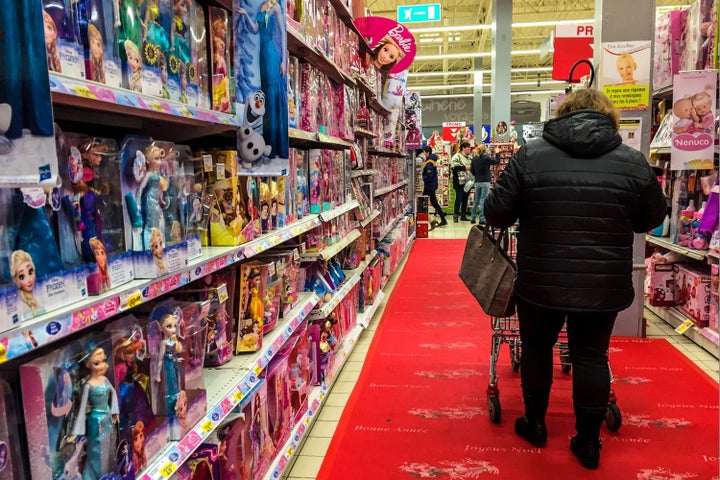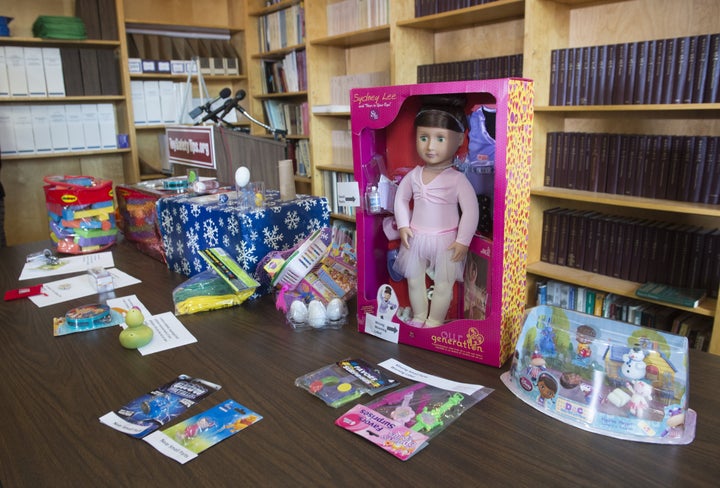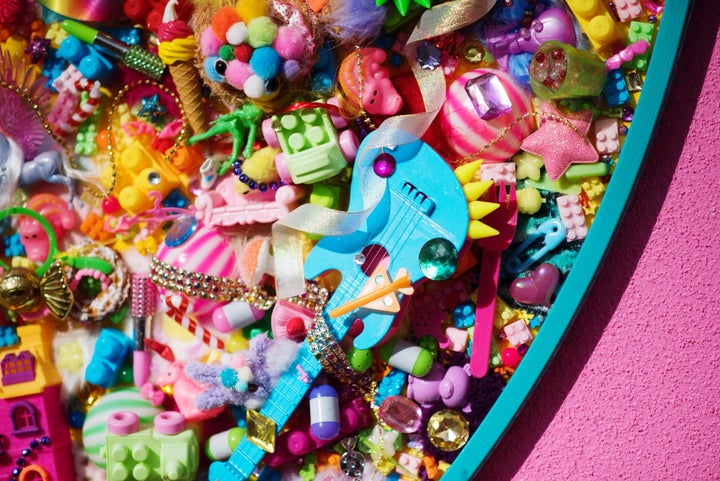This story is part of a series on ocean plastics.
There’s nothing quite like seeing the look of sheer joy on a child’s face after handing him a brand new, shiny gift. That is, until you consider just how damaging an effect said present will have on the world he’s going to inherit.
The toy industry is massive. It hit $20.36 billion in sales last year and shows no sign of slowing down ― nor does the negative impact it’s having on the environment.
Plastic toys, which tend to be inexpensive and vibrantly colored, account for 90 percent of the market, according to a plastics trade magazine. And while they pose the same risks as any other plastic item, these cheap playthings often have shorter life spans than high-quality toys and are pretty much impossible to recycle.
“If it’s a flimsy plastic toy that clearly isn’t going to have more than a lifetime of a few days or weeks, would you really want to be getting that material?” Kevin Brigden, senior scientist at Greenpeace International Science Unit, told HuffPost. “As soon as you open it, you’ll be putting it into the waste stream.”
Heck, even pricier plastic toys will get thrown out someday. And while they might not land in the trash right away, they can’t be recycled either.

Environmentalists have a number of pressing concerns when it comes to the way in which plastic is interacting with the environment. In 2014, Americans generated about 33 million tons of plastic. The year before, only 9.5 percent of plastics were recycled, according to the U.S. Environmental Protection Agency. But the scope of the issue is so severe, experts say they can’t even pinpoint accurate figures to define the problem.
One of the things that separates plastic toys from other plastic objects is that they’re essentially destined for the landfill, said Brent Bell, vice president of recycling at Waste Management, a company that provides recycling solutions to businesses and residences in North America.
“There are really very few toys that are good candidates for recycling,” Bell told HuffPost.
Plastic toys pose a unique challenge because they’re typically composed of other materials too, such as metals. The recyclable components can’t be separated out, and become prohibitive for recycling centers, Bell explained.
It’s not just the environmental impact that advocates are concerned about. The health effects of the chemicals used in the manufacturing of plastic toys are not fully known, but at least one type of common chemical, called phthalates ― which is used to soften soys ― has been linked to a number of health issues, including birth defects, cancer and diabetes, The New York Times reported in 2014. And since children often put toys in their mouths, they’re at an increased risk.
Environmental experts say to look to the products of eras past ― when toys were made from durable materials that could be passed down from one generation to the next. Before World War II, heavy-duty toys were the standard. But once metal became hard to come by, plastics took over ― and have dominated the industry ever since.
Items made from wood, cotton, metal and natural rubber are considered feasible alternatives to plastic toys.

While other plastic products, like soda bottles, are becoming increasingly worrisome to environmentalists, they’re actually more manageable than plastic toys.
Plastic soda bottles are composed of one uniform type of plastic, and the major beverage companies have made their bottles entirely recyclable. While this doesn’t necessarily mean consumers are always recycling these products, at least the potential is there. Soft drink companies also have the opportunity to produce refillable bottles, which can keep the products in use.
Toys typically serve one role and can’t be repurposed.
Another issue with plastic toys is the rate at which they’re being consumed. Children receive plastic toys for birthdays and holidays, in gift bags at parties and inside cereal boxes and meals at fast food restaurants. These types of trinkets often occupy a kid’s attention for a short amount of time and then get discarded. Or, the playthings can be made from such insufficient materials that they’ll fall apart after just a few uses and quickly wind up in the trash.
“You have all these toys ― they’re cheap, they’re made out of plastic, they break easily. Most of the time they end up in the trash,” said Steve Rho, CEO of sustainable toy company Big Future Toys. “It was totally incongruent for us to buy these toys for our kids for their edification and enjoyment. We’re actually harming their environment that they’re going to live in for the rest of their lives.”
It hit Rho just how detrimental plastic toys are after he took one of his daughters to a birthday party at a Chuck E. Cheese’s location in Los Angeles. At the end of the event, all of the kids received a bag about the size of a 2-gallon milk jug, filled to the brim with “kitschy cheap little toys,” Rho said. When his daughter got home, she played with the toys with her sister for a little while, until most of them broke.

Rho and his wife, Kristin, had no choice but to dump the plastic bits into the garbage since they knew their local recycling center wouldn’t accept such items.
“It kind of dawned on us, that was us ― one family,” Rho said. “Let’s think of all the other families at this birthday party, all the families that come to Chuck E. Cheese’s for birthday parties every day ― that’s a huge amount of plastic waste. The magnitude of it started to dawn on us. How big an industry toys are, how much of an impact they could have if they were made sustainably.”
That’s when Rho, who works as a product manager in the clean fuel industry by day, decided to develop Big Future Toys together with his wife. The burgeoning company makes magnetic building sets composed of FSC wood, which means the wood was harvested sustainably.
It’s not just flimsy toys that immediately fall apart that are problematic. Major toy companies produce exorbitant amounts of plastic packaging that’s immediately thrown out, and they also contribute to greenhouse gas emissions, among other issues.
Lego, for example, poses environmental concerns because of the extraction and refinement of oil required to make its toys. That’s where three-quarters of Lego’s carbon footprint comes from, Fast Company reported.

Lego said it’s working to make its products more sustainable, but that’s still a long way off. The company is investing about $150 million into identifying and implementing eco-friendly alternatives to its current materials by 2030.
In 2013, Hasbro ― the maker of Play-Doh ― vowed to reduce its packaging material, eliminate polyvinyl chloride (a type of plastic) from its packaging, and increase its use of recycled content, GreenBiz reported.
Bell, of the company Waste Management, would like to see manufacturers utilize recycled content to make the toys, and encourages consumers to donate old toys.
While there are some companies that are disrupting the market and crafting environmentally friendly toys, there aren’t many. Yoxo, for example, makes its toys out of recycled wood fiber and can be recycled again once consumers are finished with them. Green Toys manufactures its products from recycled milk jugs, yogurt cups and other types of recycled plastic.
Finding such ecologically responsible items in big box stores isn’t common, though.
“Overall, the sustainable toy market is still very much a niche type of thing,” Rho said. “You’re not going to find these really sustainable options when you walk into Toys R Us. Or it’s going to be a very limited selection.”
If buying sustainable toys isn’t an option, Rho suggests scaling back on the amount of items families buy for kids.
“This will sound crazy coming from a toy company ― maybe you don’t buy a toy, maybe you substitute an experience, a trip to the zoo or to a great show,” Rho said. “It reduces clutter in your home and you’re not using so many natural resources.”
